Scroll down for a transcription of this episode.
Trees aren’t just competing for sunlight and soil—they’re also looking out for one another. Scientist Suzanne Simard reveals the unexpected ways trees communicate, share resources, and support us.
Summary: We dive into what we can learn from the neural networks of forests, evolution and cooperation, and how trees are a fundamental solution to the climate crises we are facing today with ecologist Suzanne Simard. She also shares her forest gratitude practice and invites us to reflect on what it means to feel a sense of belonging in the forest.
How To Do This Practice:
- Go to a forest or natural space, ideally near yew trees or other trees you feel connected to.
- Sit quietly, even if you're tired or unwell, and allow yourself to simply be there.
- Acknowledge the presence and life of the trees around you.
- Offer your gratitude to the trees—for their medicine, their strength, or simply their being.
- If you're with loved ones, invite them to join in the gratitude.
- Feel the connection between yourself, the trees, and your companions.
- Return to this practice as often as you can, letting the forest remind you that you're not alone.
Today’s Guests:
DR. SUZANNE SIMARD is a professor of Forest Ecology at the University of British Columbia and the author of Finding the Mother Tree: Discovering the Wisdom of the Forest.
Read her book here: https://tinyurl.com/bdfy463z
Related The Science of Happiness episodes:
How Water Heals: https://tinyurl.com/utuhrnh3
Experience Nature Wherever You Are, with Dacher (Encore): https://tinyurl.com/aj34s585
The Healing Effects of Experiencing Wildlife: https://tinyurl.com/49pkk6eu
Related Happiness Breaks:
How To Ground Yourself in Nature: https://tinyurl.com/25ftdxpm
Pause to Look at the Sky: https://tinyurl.com/4jttkbw3
A Walking Meditation: https://tinyurl.com/mwbsen7a
Tell us about your experience connecting with nature. Email us at happinesspod@berkeley.edu or follow on Instagram @HappinessPod.
Help us share The Science of Happiness! Leave us a 5-star review on Apple Podcasts and share this link with someone who might like the show: https://tinyurl.com/2p9h5aap
Transcription:
SUZANNE SIMARD: I had breast cancer and it was in my lymphatic system, so I had to go through a pretty strong regimen of chemotherapy and radiation therapy.
I think anybody who gets a life-threatening disease like cancer, it's a very fearful time of your life. You know, learning how much it's spread.
And, I remember one day saying to my doctor, I said, “I can't do this anymore.” You know, I just, I couldn't get off the couch. I couldn't do anything. And I got to that point where I understood why end-of-life is the end of life, right? It's really hard to carry on sometimes.
And my doctor, Dr. Malpass, said to me, he said, “Suzanne, just hang on, because this next drug, you'll feel better.” And that was Taxol, paclitaxel, which is derived from the Pacific yew tree. And these trees grow all around me, in the forests around me.
And so, then I started it and I did start to feel better. At the same time, I was making friends with my other chemo buddies. We're all really good friends still and we all had double mastectomies and we all had this treatment. And so it was the togetherness with the tree. It was the togetherness with my friends and then my children, too. And I used to take my children out to the forest just when I was, you know, in that part of the treatment. I could hardly walk. I was so exhausted. But we would go to the yew trees and we would just sit around them and thank them. Those living creatures were such an important part of my life then and my children's life. And it gave us all so much hope and. And I got through it.
DACHER KELTNER: Our guest today has spent decades studying trees, how they survive and thrive, and then what we as humans can learn from them.
SUZANNE SIMARD: Not just in academia, but in the practice of forestry, we were just so fixated on competition. However, you know, even Darwin understood that collaboration was important in plant communities.
DACHER KELTNER: More, up next.
I’m Dacher Keltner, welcome to The Science of Happiness.
Dr. Suzanne Simard: is a professor of Forest Ecology at the University of British Columbia and the author of Finding the Mother Tree: Discovering the Wisdom of the Forest. She joins us to share more about what we can learn from the neural networks of forests, evolution and cooperation, and how trees are a fundamental solution to the climate crises we are facing today.
Suzanne, I want to thank you for taking a few minutes out of your busy schedule to join us on The Science of Happiness.
SUZANNE SIMARD: Oh, it's my pleasure. Thanks for having me.
DACHER KELTNER: When I read your book, I thought a lot about, in some sense, Charles Darwin, who just loved being out in nature. And I'm curious, what drew you first to study the relationship between trees and plants and then humans?
SUZANNE SIMARD: Yeah, I grew up in a logging family, a horse logging family. I mean, I grew up in these old-growth forests that we call the inland rainforests in British Columbia. These are like the iconic old-growth forests with huge cedars and huge hemlocks and devil's club that is two meters tall, and skunk cabbage as tall as you are. And yeah, so that's how I grew up. And so I guess it was a natural and–although, you know, when I was a teenager, I didn't even know what forestry was, although I grew up in this forestry family, it was a logging family, but I eventually stumbled into it.
DACHER KELTNER: What was it like as a young child, just growing up in a forest and all of old-growth trees?
SUZANNE SIMARD: There are forests all around. So it was, that was our playground. So, you know, building forts and tree forts and rafts and taking our rafts to the next bay in this huge lake that my grandparents lived at. And just, you know, we were wild kids, I guess. And so, I learned a ton even just observing it and not even realizing it.
DACHER KELTNER: Yeah. You know, your book, Finding the Mother Tree, Discovering the Wisdom of the Forest, truly, like great science and great books changed how I relate to the world and I'm curious, the mother tree is at the heart of the book and your research, what are mother trees?
SUZANNE SIMARD: They're just the biggest, oldest trees in the forest. So, you know, they're the ones that stick above the canopy. And the reason that they're so important is they have these huge, massive root systems that mirror their huge, massive crowns. And, those root systems have many points of contact where they form a symbiosis with a mycorrhizal fungus, and all trees all over the world do this, all of the trees in the forest do. But these big old trees are highly connected just because they’re so massive and these massive root systems. And so they're the hubs of what we call neurological networks.
As we experimented with what these networks do, we found that, of course, they linked to all the other trees and they convey information and resources and even to seedlings that are regenerating around these old trees. They nurture these seedlings through the networks. And so that's what led us to calling them mother trees.
DACHER KELTNER: When I think about human communication, we have these sophisticated languages of the voice and symbolic representation in the face and the body, and it's processed through a brain. And maybe you could think about culture as this neurological network in some sense. How does it work with trees?
SUZANNE SIMARD: Trees do have these myriad ways to communicate, just like, as you mentioned, that humans, we can see our faces. We have body language. We have the spoken language and, you know, trees have these multiple ways of communicating as well. And, you know, the English language doesn't describe that very well. You know, the English language is so focused on ourselves, the human being, that we lack in words to describe these incredible interconnections in nature. And I have to say that, you know, in studying with the Aboriginal people of North America, I realize now, I know now from talking to them that their ancient languages just had words for these phenomena. Whereas the English language is, you know, it's very human-centric.
You mentioned Darwin at first and, you know, Darwinian and competition and competitive exclusion and speciation really took hold not just in evolutionary ecology, but also ecology. And then the application of ecology in forests is forestry and agriculture. You know, it also took competition as the most dominant, in fact, the only important interaction or way that trees and plants interact or communicate with each other. You know, basically trying to get the most resources for themselves. And this led to, you know, forest practices that really focused on that competition.
And what I learned was that actually, trees don't just compete, they collaborate, too. And they, even as they're shading their neighbors, they're sending resources like carbon and nutrients and water. And later we found out, you know, in our recent studies that they don't just convey or they don't just communicate via resource redistribution, but in information, as well. So information like, you know, whether or not, you know, the donor or the recipient of that information is weak or strong, you know, highly rich in nitrogen or weak in nitrogen or low in nitrogen.
DACHER KELTNER: I have to ask you about a couple of findings that blew my mind. One, back to communication, is how a Douglas fir tree that had been injured actually warned a different species of Ponderosa pine of danger. How does that work?
SUZANNE SIMARD: As climate is changing, Ponderosa pine in theory will replace Douglas Fir at lower elevations or moving up in elevation, as Douglas fir dies out from lower elevations. And so, I was interested in whether or not Douglas fir as it's dying or being attacked or weakening, whether it would communicate information to the Ponderosa pine that would be better adapted to that warmer climate. And sure enough, we found that, Douglas fir was sending, for one, it sent a lot of carbon over to the to the Ponderosa pine, which was interesting. But it also sent this, defense information. And we think that that the jasmonic acid pathway in the injured plant was triggered and that these byproducts of that pathway were transmitted over to the Ponderosa pines, and produced these defense enzymes and protected that Ponderosa pine against the injury. So, yeah, it was quite amazing.
DACHER KELTNER: I'm awestruck. Your work just almost flips our understanding of the natural world on its head. And it leads us to see, you know, these collaborating everywhere. I suspect the scientific community, even though you're now appreciated by millions, the scientific community, was a little bit skeptical of you early on, or hostile even?
SUZANNE SIMARD: Yeah, I think because, not just in academia, but in the practice of forestry, we were just so fixated on competition. And like I said, Darwin was like really a theoretical evolutionary biologist that really paved the way for our understanding of, of natural selection. And that is still an incredible finding and body of theory. However, you know, even Darwin understood that collaboration was important in plant communities. And even though he didn't get, you know, known for that really, and it got lost, I think in all the, you know, the fascination with natural selection based on competition, he still understood it. But, you know, in us applying this theory, you know, that more narrow theory, we just got so carried away.
And, it’s so entrenched in our practices and you know, how we manipulate our ecosystems that it's hard to change. You know, people get attached to these theories and especially if there's a lot of money involved in the business behind it. You know, then there's a great reluctance that I think that's what you know, I came up against those two things, the academic side, as well as the application side.
DACHER KELTNER: There's a wonderful scientific paper from 2015 by Ming Kuo of the University of Illinois, where she identifies 21 pathways through which nature heals your body. It's linked to stronger immune systems, lower inflammation. When you think about your life living and studying in nature, what do you think it has given you?
SUZANNE SIMARD: Well, you know, I don't think I'd have a life without nature, if that answers your question. All of us. Every day I go to the forest, right. I live in the forest. I live in a little town called Nelson, which is in south southeastern B.C. that is near the Rocky Mountains. It's, you know, surrounded by mountains and forests. And so I go in every day and all those things you talk about, you know, the calming of the senses, the touch, the sound, the breath, the chemistry. I get all that every day and I think that's what gives me so much strength. And, also, you know, I'm devoted to helping these forests survive and be strong and be resilient as climate change is not just for me, but for the whole ecosystem and my children and generations to come. So, being in the forest gives me motivates to do that. It certainly gets back to me every day.
DACHER KELTNER: You say, “I don't think I'd have a life without nature.” In Finding the Mother Tree you write about that, how a chemical derived from a tree actually saved your life when you had cancer.
SUZANNE SIMARD: Yeah. I had breast cancer, so I had to go through a pretty strong regimen of chemotherapy. And, you know, I've been cancer-free for over nine years, so I'm really happy that it worked. And so, yeah, there were two medicines that they used for me because it was, it was a worrisome case. And one of them was taxol, Paclitaxel, which is derived from the Pacific yew tree. And these trees grow all around me in the forests around me. And it was discovered actually from Aboriginal knowledge systems. Aboriginal people used the yew and extracts from its cambium and its phloem and needles to make medicines. And so they'd known about this for like thousands of years of living here and working with these trees. And, and then the USDA, U.S. Department of Agriculture, actually scanned for this Aboriginal knowledge about the medicinal of a number of plants, hundreds of plant species, and they screened them for anticancer agencies. And the yew tree came up as one of the big stars.
DACHER KELTNER: Amazing.
SUZANNE SIMARD: I promised in my book I would give back. And so my graduate students and I, we're looking at how old growth cedars and maple trees, which grow alongside cedars, and yew trees, they all grow together. We just discovered they're all linked together in these arbuscular mycorrhizal networks. And I was interested in how the neighborhood and the relationships with other trees, might affect the production by the yew tree of taxol and not just how much, but the quality in the anticancer medicinal agency of it. And so, that's what we're doing. So definitely, you know, coming back to the theme of relationships, it's so important not just for us, but for trees as well. And it comes back to us, too, right. It's all linked together.
DACHER KELTNER: That’s symbiosis.
So, you know, you write a lot about how we really have to rethink nature. And you spoke of this earlier. You know, it's not purely competition, you know, out for its own kind. It's cooperative. There's a deep sense of community and a lot of different ecosystems and social systems. And one of the striking illustrations of this, and I'm just curious for you to riff off this, is how, like humans, when seedlings grow up linked into these neurological net–or fungal networks of elder trees, they survive better and grow better. So being connected is better. Humans, that's one of the central findings in the science of happiness is just, be connected. What are the broader life lessons you took from that finding and then this rethinking of nature?
SUZANNE SIMARD: In the last half-dozen years I've been looking at whether or not these old trees can recognize which seedlings they're associated with and whether they're related to them. And we found that they are. And we found that, you know, the survival was better, that's true. That's what we found they have better survival, better growth rates, better nutrition. And these old trees transmit carbon to these kin that help them get through their early years, their juvenile years. And so, that connection is absolutely essential, especially in forests. These little seedlings are growing up under pretty stressful conditions.
DACHER KELTNER: The survival rate is low.
SUZANNE SIMARD: Oh, yeah. The light is low. They can't photosynthesize enough. And so they're getting these extra resources from these parent trees. And if that's happiness, because I think in trees, I would be happy if I was getting all that, too. So, it certainly helps them have a better life.
DACHER KELTNER: Incredible.
Final question. You've published hundreds of studies, peer review. You know, and you work at these incredibly complex, multilayered levels of analysis of RNA and molecules and carbon and genotypes and neurological networks and the like. And I'm just curious how you would shift up to like, what are one or two big takeaways for you that our listeners should take from our conversation?
SUZANNE SIMARD: One thing is that we are at an environmental crossroad, right? We're at a critical time. And I know people are probably tired of hearing this, but it's true, right? Climate is changing so quickly. But we can mitigate that. And so my message here is, you know, get involved. Because the forest management and the exploitation of forests is just making that worse. And what we need to do is we need to keep our old-growth forests because they're the homes of biodiversity. Eighty percent of our species live in forests. They house over 80 percent of the world's carbon. And so in order to be an effective activist is to love the forest and be, you know, engaged in nature so that you'll devote your time and energy to it because it's worth it. It's worth it for our next generations. It's worth it for our current generation. Right. Because we're all, you know, feeling the effects of climate change and species losses already.
DACHER KELTNER: Everyday. Well, Suzanne Simard, thank you for your book. Finding the Mother Tree, Discovering the Wisdom of the Forest. I want to thank you for stopping by on The Science of Happiness.
SUZANNE SIMARD: Thanks so much for having me.
DACHER KELTNER: What if the key to feeling better was already in your hands? A pen, a paintbrush, or a lump of clay.
Shabnam Piriayae Everybody is a creator and everyone is an artist. And to be an artist isn’t some gallery, or you know, it’s about expressing what is inside of you in a way that is unfettered by anyone else's rules. And that’s it and just do that, you can lead with your heart.
DACHER KELTNER: On our next episode of The Science of Happiness, we’re getting into how art can give us insights on our emotions and the world around us.
Thanks for joining us on the Science of Happiness. Our producer is Truc Nguyen, our Associate Producers are Emily Brower and Dasha Zerboni. Sound designer Jennie Cataldo of Accompany Studios. Our Executive Producer is Shuka Kalantari. I’m Dacher Keltner, have a great day.


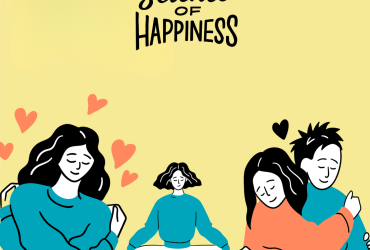
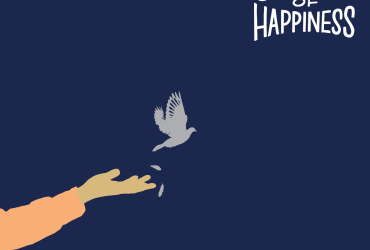

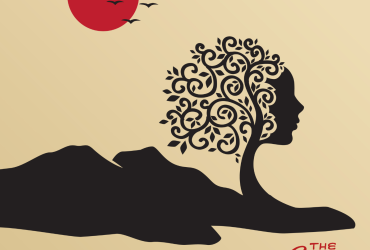
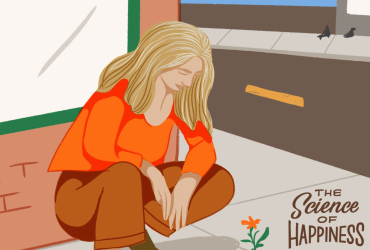
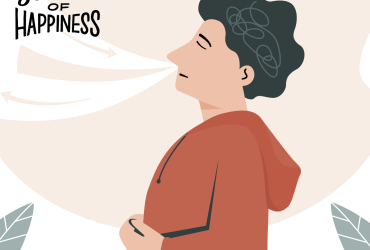
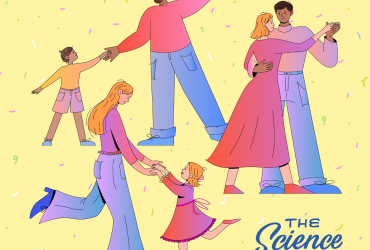

Comments